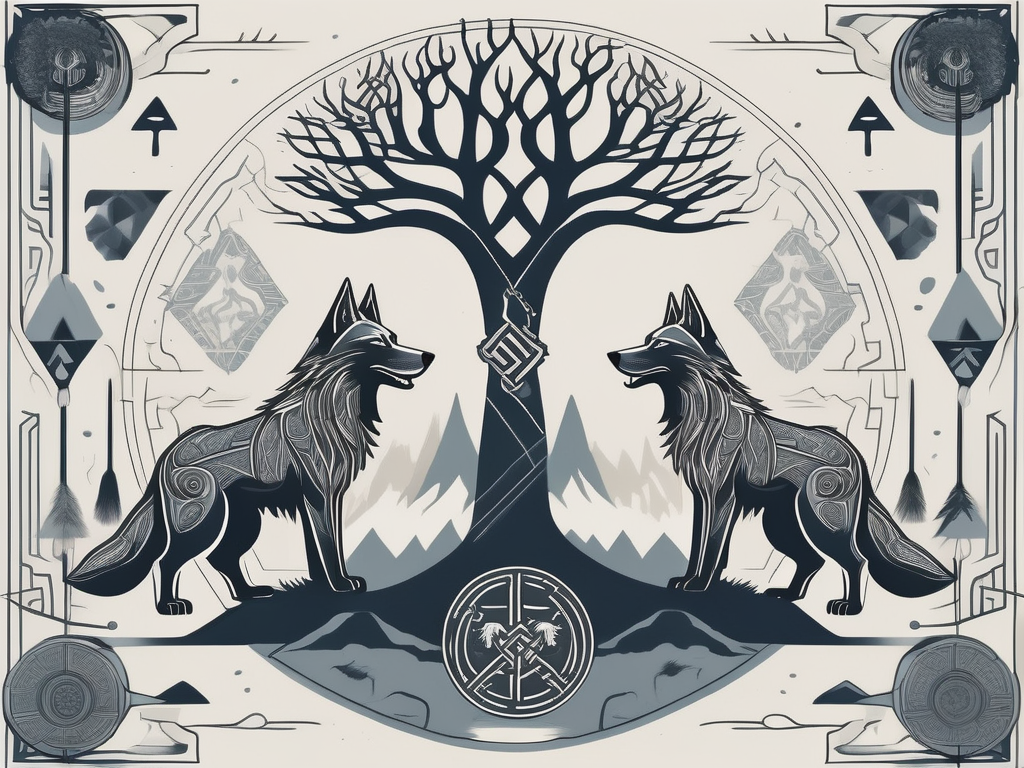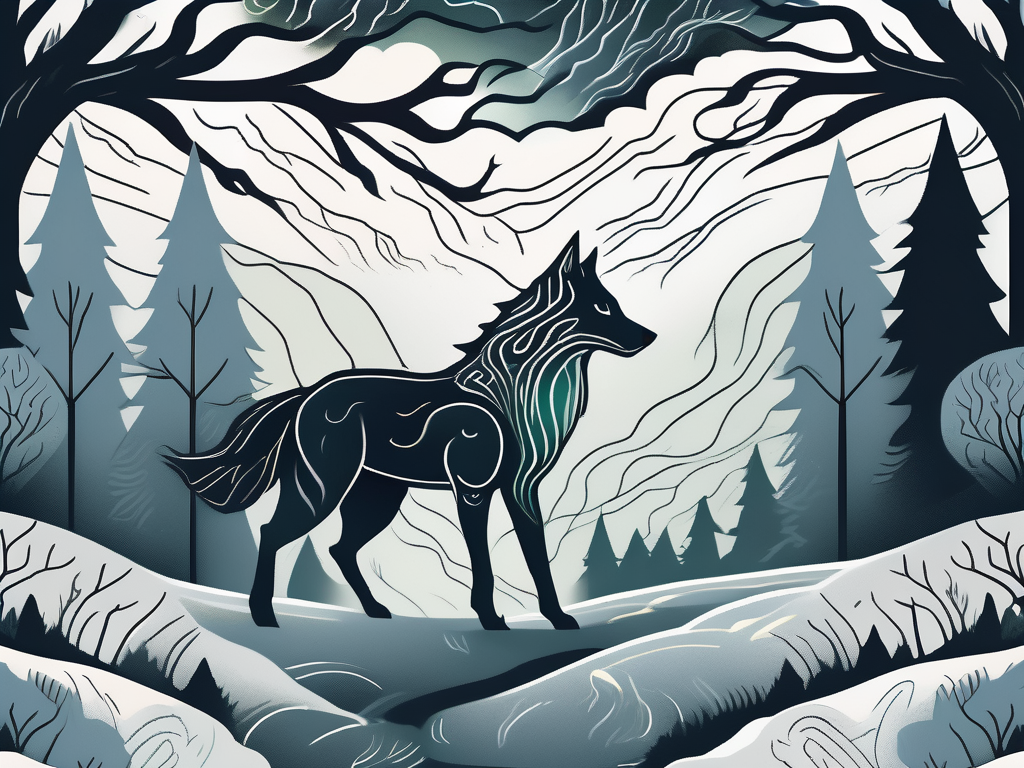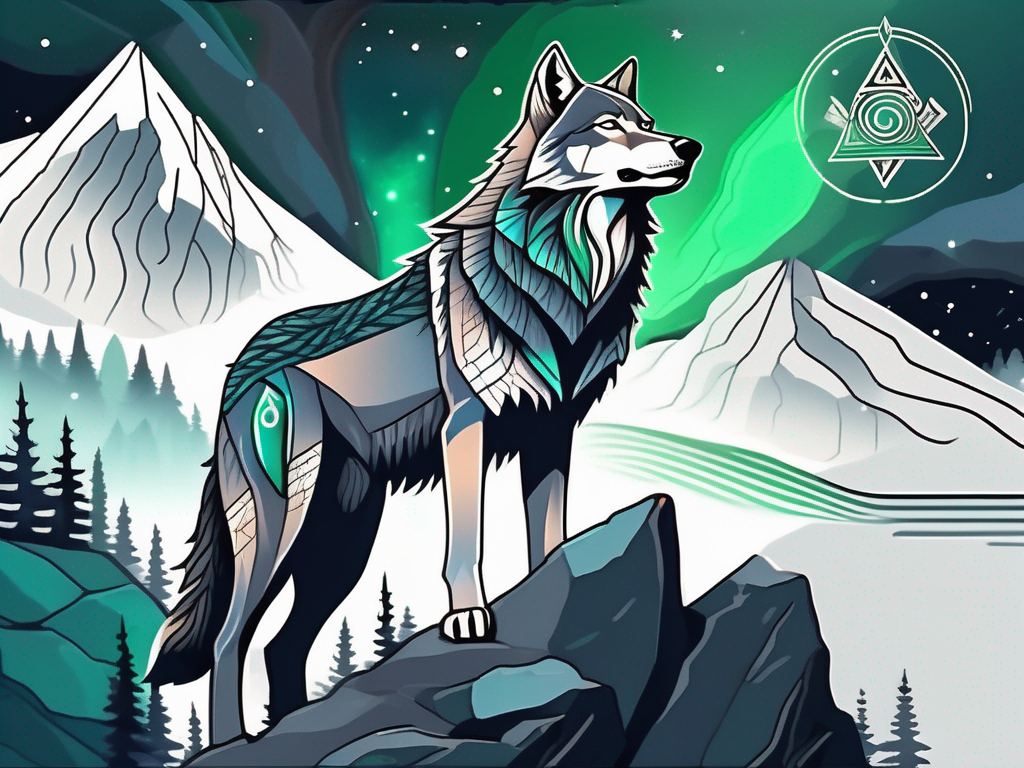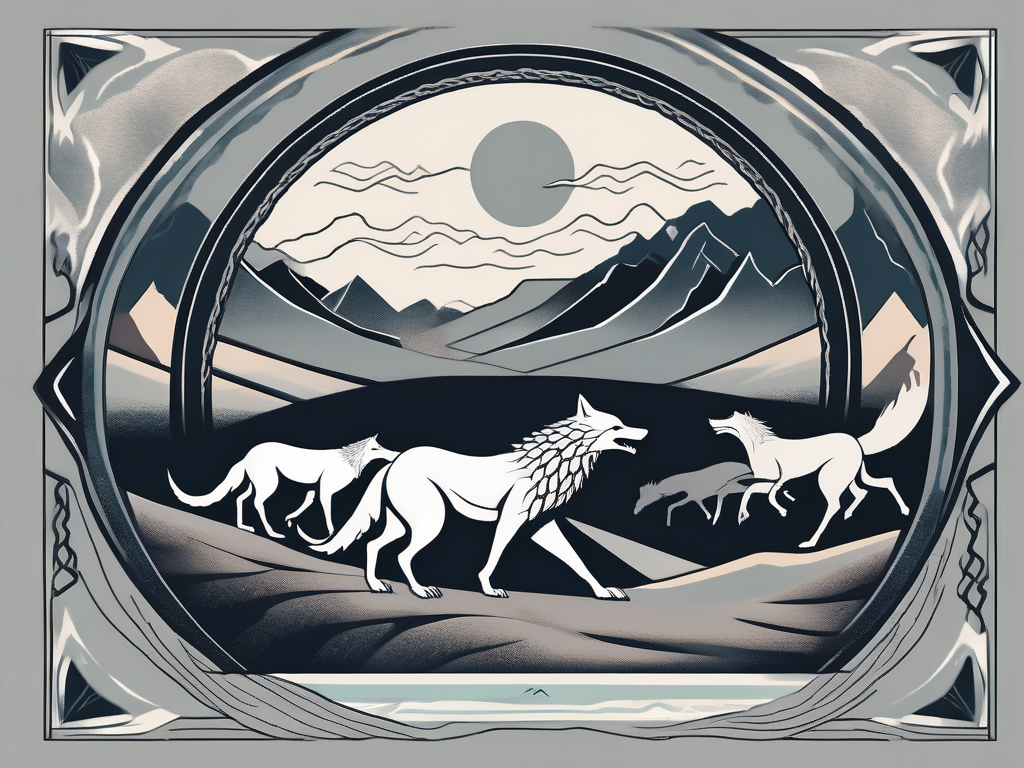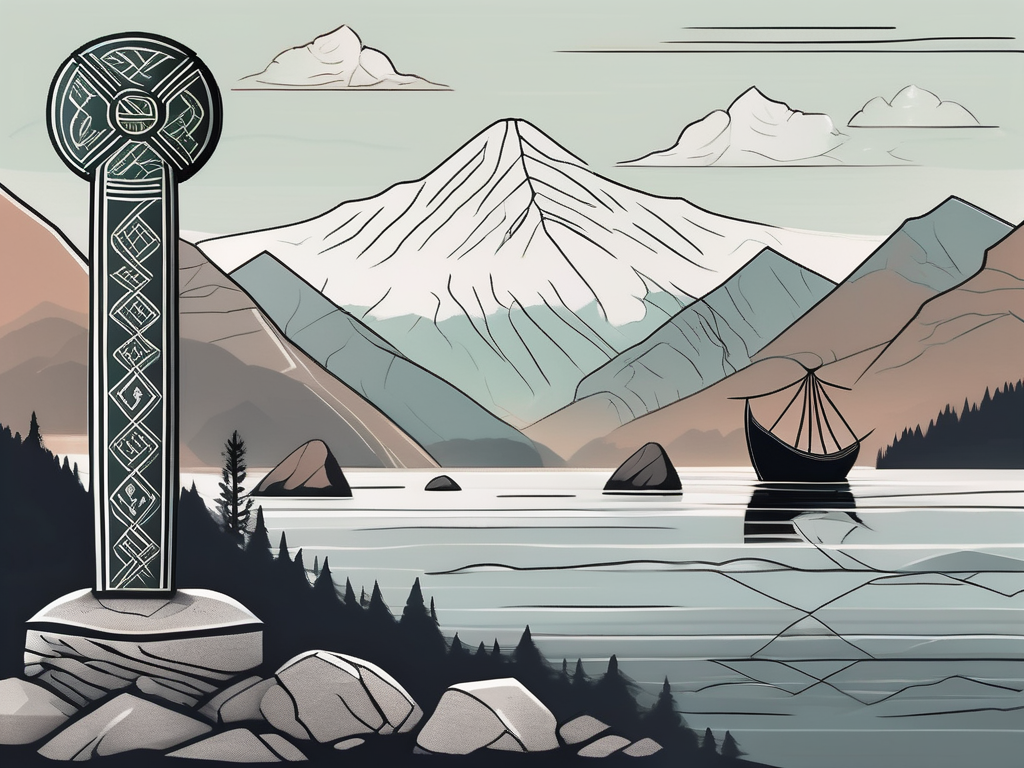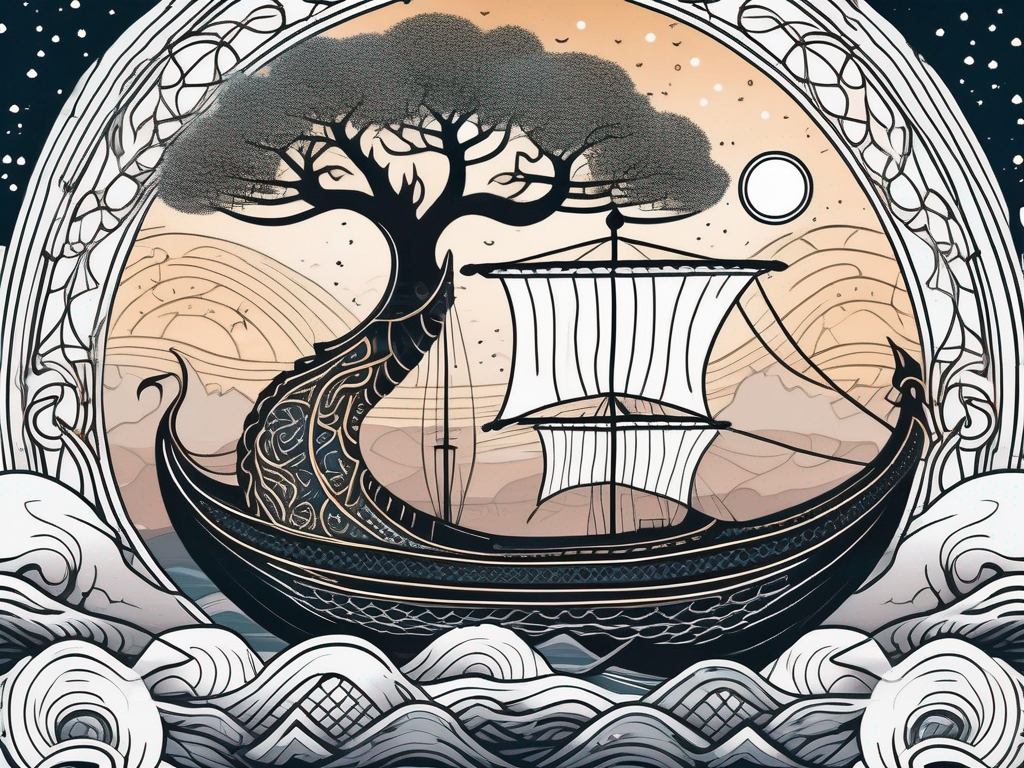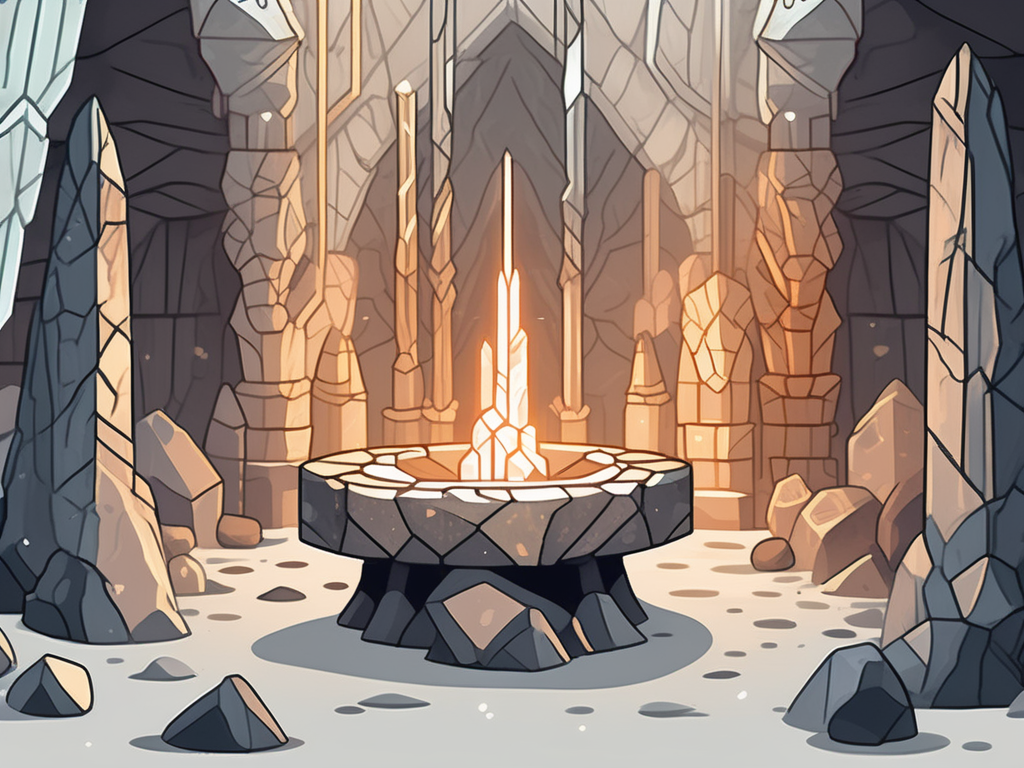In the world of Norse mythology, dogs play a captivating and significant role. Understanding the intricacies and beliefs of this ancient mythology can shed light on the importance of these loyal creatures. Additionally, exploring famous dogs in Norse mythology, their symbolism, and their involvement in rituals and traditions provides fascinating insights. Moreover, the influence of Norse mythology on modern perceptions of dogs and its portrayal in popular culture unravels the profound legacy left by these mythical canines.
Understanding Norse Mythology
Norse mythology encompasses a complex web of stories, beliefs, and deities that were central to the Norse people’s lives. It formed the basis of their spiritual and cultural practices, offering insight into their worldview and values. Central to Norse mythology is a pantheon of gods and goddesses, who are accompanied by various mythical creatures, including dogs.
The Norse people held a deep reverence for their mythology, viewing it as a sacred and integral part of their existence. The stories and beliefs served as a guide for their daily lives, providing moral lessons and explanations for natural phenomena. It was through these myths that they sought to understand the world around them and their place within it.
One of the key aspects of Norse mythology is the concept of a cosmological structure consisting of multiple realms. These realms, such as Asgard, the realm of the gods, and Midgard, the realm of humans, were interconnected and inhabited by various beings. Dogs, in particular, were believed to have a special connection to these realms, acting as intermediaries between the mortal and divine.
Key Concepts and Beliefs in Norse Mythology
To truly comprehend the role of dogs in Norse mythology, it is essential to grasp some of the central concepts and beliefs. Norse mythology asserts the existence of multiple realms, each with its own distinct characteristics and inhabitants. These realms were interconnected through the World Tree, Yggdrasil, which served as a cosmic axis linking the different realms together.
At the center of Norse mythology lies the belief in the imminent doom of Ragnarok, a cataclysmic event that signifies the end of the world. This belief influenced the perception of dogs in Norse mythology as guardians and protectors. It was believed that during Ragnarok, dogs would play a vital role in defending the gods and humans against the forces of chaos and destruction.
Furthermore, dogs were seen as symbols of loyalty, bravery, and companionship. They were often depicted as faithful companions to the gods and heroes, accompanying them on their journeys and adventures. In many mythological stories, dogs were portrayed as fierce and fearless warriors, embodying the qualities that the Norse people admired and aspired to possess.
The Importance of Animals in Norse Mythology
Animals hold a significant place in Norse mythology, often representing certain traits, aspects of nature, or embodying supernatural powers. They can be companions, guides, or even antagonists in the mythological stories. Dogs, in particular, play a crucial role due to their loyal and protective nature.
In Norse mythology, dogs were believed to possess a heightened sense of perception and were capable of sensing danger and evil. They were seen as guardians of the home and family, offering protection against malevolent spirits and other supernatural threats. It was common for Norse people to keep dogs as pets and companions, valuing their presence for both practical and spiritual reasons.
Additionally, dogs were associated with certain gods and goddesses in Norse mythology. For example, the god Odin was often depicted accompanied by two wolves, Geri and Freki, who represented his ferocity and wisdom. Similarly, the goddess Freyja, associated with love, beauty, and fertility, was said to have a chariot pulled by two large cats.
Overall, the role of dogs in Norse mythology goes beyond mere companionship. They symbolize loyalty, protection, and the connection between the mortal and divine realms. Their presence in the mythological stories serves as a reminder of the values and qualities that the Norse people held dear, offering a glimpse into their rich and intricate belief system.
The Symbolism of Dogs in Norse Mythology
In Norse mythology, dogs are symbolically associated with various attributes, making them both admired and feared creatures.
But let us delve deeper into the rich symbolism of dogs in Norse mythology, exploring their roles as guardians, protectors, and symbols of loyalty and friendship.
Dogs as Guardians and Protectors
The Norse people revered dogs for their exceptional protective instincts. This is because they believed that these faithful creatures played a vital role in guarding the gates of the different realms, ensuring the safety of the gods, humans, and the afterlife.
One of the most prominent examples of a dog fulfilling this protective role is Garmr. Garmr, a monstrous dog with gleaming red eyes, was destined to guard the entrance to Hel, the realm of the dead. His ferocity and unwavering loyalty made him a formidable guardian, instilling fear in the hearts of those who dared to approach the gates.
Another notable canine guardian in Norse mythology is Fenrir, a colossal wolf who was prophesied to cause chaos during Ragnarok, the apocalyptic battle that would bring about the end of the world. Fenrir’s immense strength and cunning made him a formidable adversary, further exemplifying the protective role of dogs in Norse mythology.
Dogs as Symbols of Loyalty and Friendship
Perhaps one of the most endearing associations with dogs in Norse mythology is their representation of loyalty and companionship. Dogs were seen as faithful allies and trusted companions to both gods and humans alike.
The bond between a god and their canine companion was evident through the story of Odin, the chief Norse god, and his two loyal wolves, Geri and Freki. These wolves, whose names translate to “Ravenous” and “Greedy” respectively, were said to accompany Odin and aid him in battle. Their presence by his side symbolized unwavering loyalty and the unbreakable bond between man and beast.
But it wasn’t just the gods who enjoyed the companionship of dogs. Humans also valued the loyalty and friendship that these creatures offered. In Norse society, dogs were often kept as household pets, providing comfort and protection to their human companions. They were seen as trusted confidants, always ready to lend an ear or offer solace in times of need.
Furthermore, dogs were believed to possess a keen sense of perception, able to detect danger and warn their owners of impending threats. This heightened awareness further solidified their role as loyal protectors and valued members of Norse society.
So, as we explore the symbolism of dogs in Norse mythology, we uncover a complex tapestry of attributes that these creatures embody. From their role as guardians and protectors to their representation of loyalty and friendship, dogs hold a special place in the hearts and minds of the Norse people, forever woven into the fabric of their mythological beliefs.
Famous Dogs in Norse Mythology
Norse mythology introduces us to several noteworthy dogs that have fascinated countless generations with their intriguing stories.
Garmr: The Dog at the Gates of Hel
Garmr, also known as Garm or Garmr the howler, holds a prominent place in Norse mythology. This ferocious hound guards the gates of Hel, ensuring that those who enter do not escape and that no unwanted visitors disrupt the realm of the afterlife.
Fenrir: The Monstrous Wolf
Among the most well-known dogs in Norse mythology is Fenrir, a colossal and fearsome wolf. Foretold to bring chaos and destruction during Ragnarok, Fenrir embodies the powerful and untamed forces of nature.
The Role of Dogs in Norse Rituals and Traditions
Beyond their symbolic significance, dogs held a distinct place in Norse rituals and traditions, embodying both reverence and practicality.
Dogs in Norse Funeral Rites
In Norse funerary traditions, dogs were believed to be loyal companions who could guide the deceased to the afterlife. It was not uncommon for dogs to be sacrificed and buried alongside their human counterparts to serve as their guides and protectors.
Dogs in Norse Festivals and Celebrations
Dogs were also actively incorporated into Norse festivals and celebrations. During ceremonies, dogs were often given offerings and treated with great reverence, signifying their revered status in Norse society.
The Influence of Norse Mythology on Modern Perceptions of Dogs
Norse mythology exercises a lasting influence on modern perceptions of dogs, seeping into various facets of contemporary culture.
Norse Mythology in Popular Culture
Modern popular culture has embraced the captivating tales of Norse mythology, with dogs often featuring in various forms, such as books, movies, and video games. These depictions often draw inspiration from the guardianship, loyalty, and mystical attributes associated with dogs in Norse mythology.
The Legacy of Norse Mythological Dogs Today
The legacy of Norse mythological dogs transcends ancient tales and continues to inspire dog owners and enthusiasts worldwide. Many deeply cherish the qualities represented by these mythological canines, such as loyalty, protectiveness, and unwavering friendship, which are celebrated and cherished in the bonds humans share with their beloved canine companions.
In conclusion, the role of dogs in Norse mythology is undeniably captivating and multifaceted. From their symbolism as protectors and guardians to their representation of loyalty and friendship, these mythical canines have left an indelible mark on Norse culture and modern perceptions of dogs. By delving into the wonders of Norse mythology, we gain a deeper appreciation for the extraordinary role that dogs have played throughout history and continue to play in our lives today.
